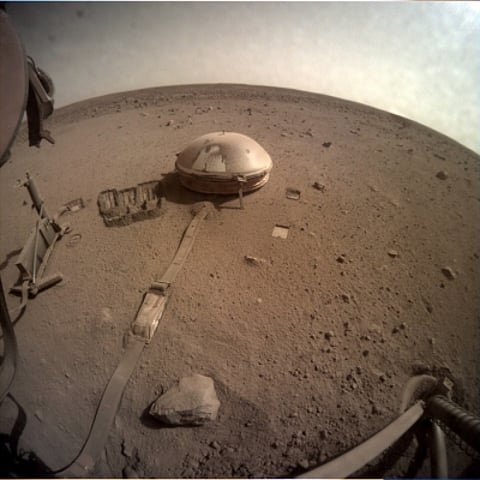"Water may also go into minerals that do not act as cement. But the uncemented subsurface removes one way to preserve a record of life or biological activity," Wright said.
Cement by its very nature holds rocks and sediments together, protecting them from destructive erosion.
The lack of cemented sediments suggests a water scarcity in the 300 meters below InSight's landing site near the equator. The below-freezing average temperature at the Mars equator means that conditions would be cold enough to freeze water if it were there.
Many planetary scientists, including Manga, have long suspected that the Martian subsurface would be full of ice. Their suspicions have melted away. Still, big ice sheets and frozen ground ice remain at the Martian poles.
"As scientists, we're now confronted with the best data, the best observations. And our models predicted that there should still be frozen ground at that latitude with aquifers underneath," said Manga, professor, and chair of Earth and planetary science at UC Berkeley.
The InSight spacecraft landed on Elysium Planitia, a flat, smooth, plain near the Martian equator, in 2018. Its instruments included a seismometer that measures vibrations caused by marsquakes and crashing meteorites.
Scientists want to probe the subsurface because if life exists on Mars, that is where it would be. There is no liquid water on the surface, and subsurface life would be protected from radiation.
Following a sample-return mission, a NASA priority for the next decade is the Mars Life Explorer mission concept. The goal is to drill two meters into the Martian crust at high latitude to search for life where ice, rock, and the atmosphere come together. (AA/IANS)


